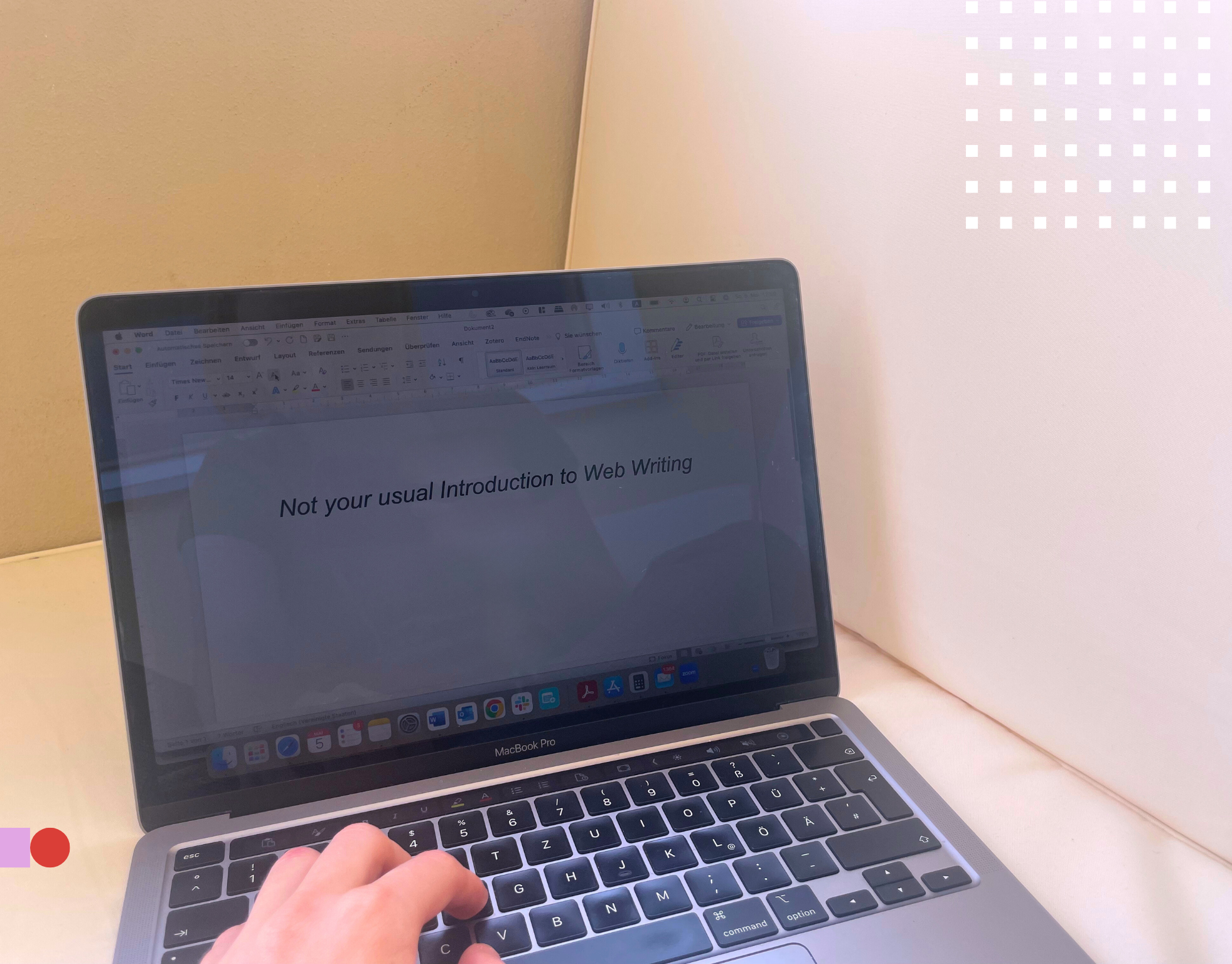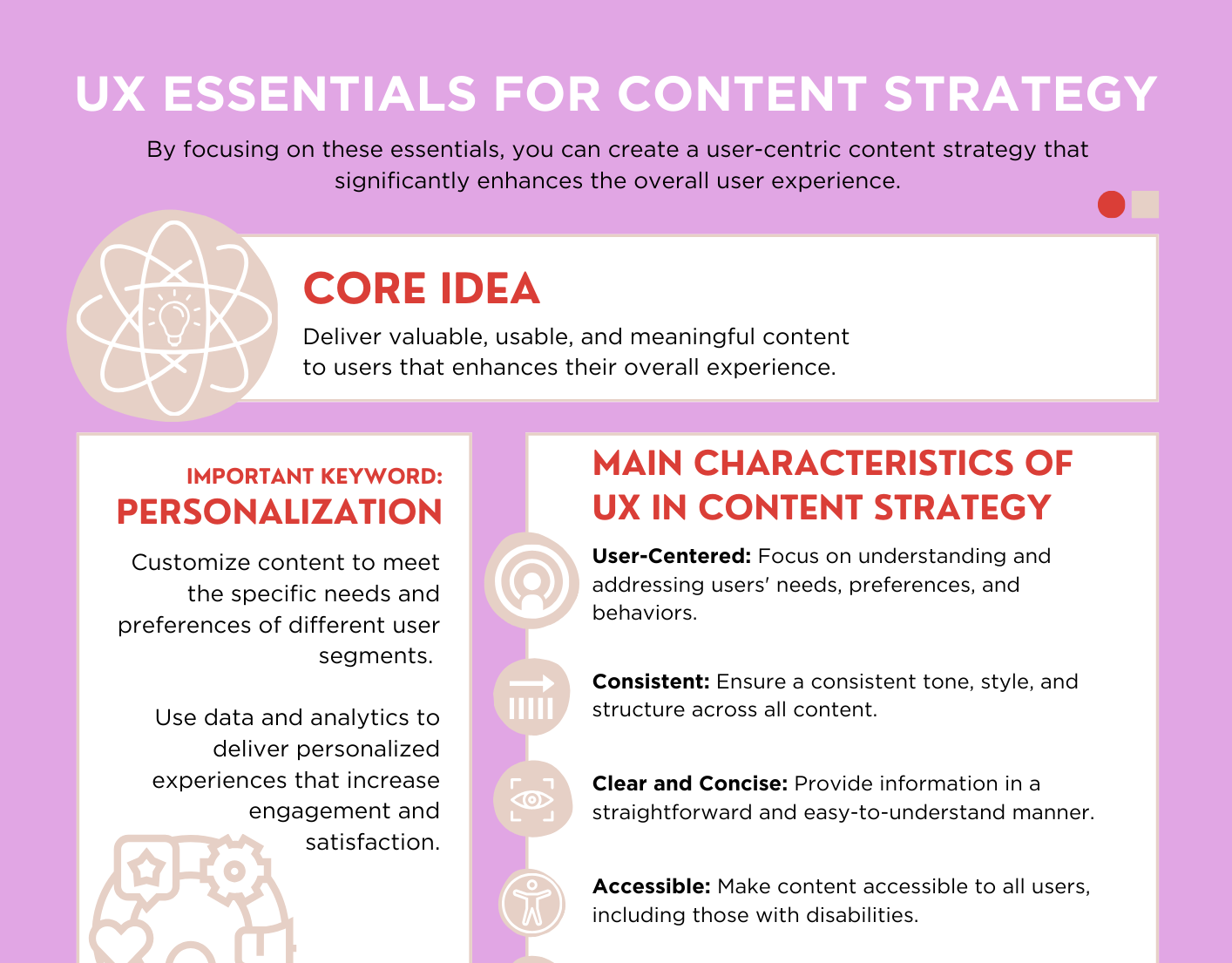I stumbled into the Content Strategy program almost by accident. The early application deadline and practical approach made it an easy choice, though at the time, I had no real understanding of what content strategy actually was. Looking back, it’s almost funny to think about how much I’ve learned and how my perception of content has evolved. I now see content strategy as more than just publishing - it’s about structure, problem-solving, and making content work for both users and businesses.
At my workplace, we often create and manage content simply because “we’ve always done it this way.” I wanted to evaluate if those practices truly made sense, ask the right questions, and develop the ability to argue for or against certain content decisions with solid reasoning. I didn’t just want to produce content - I wanted to understand its impact and ensure it serves a real purpose.
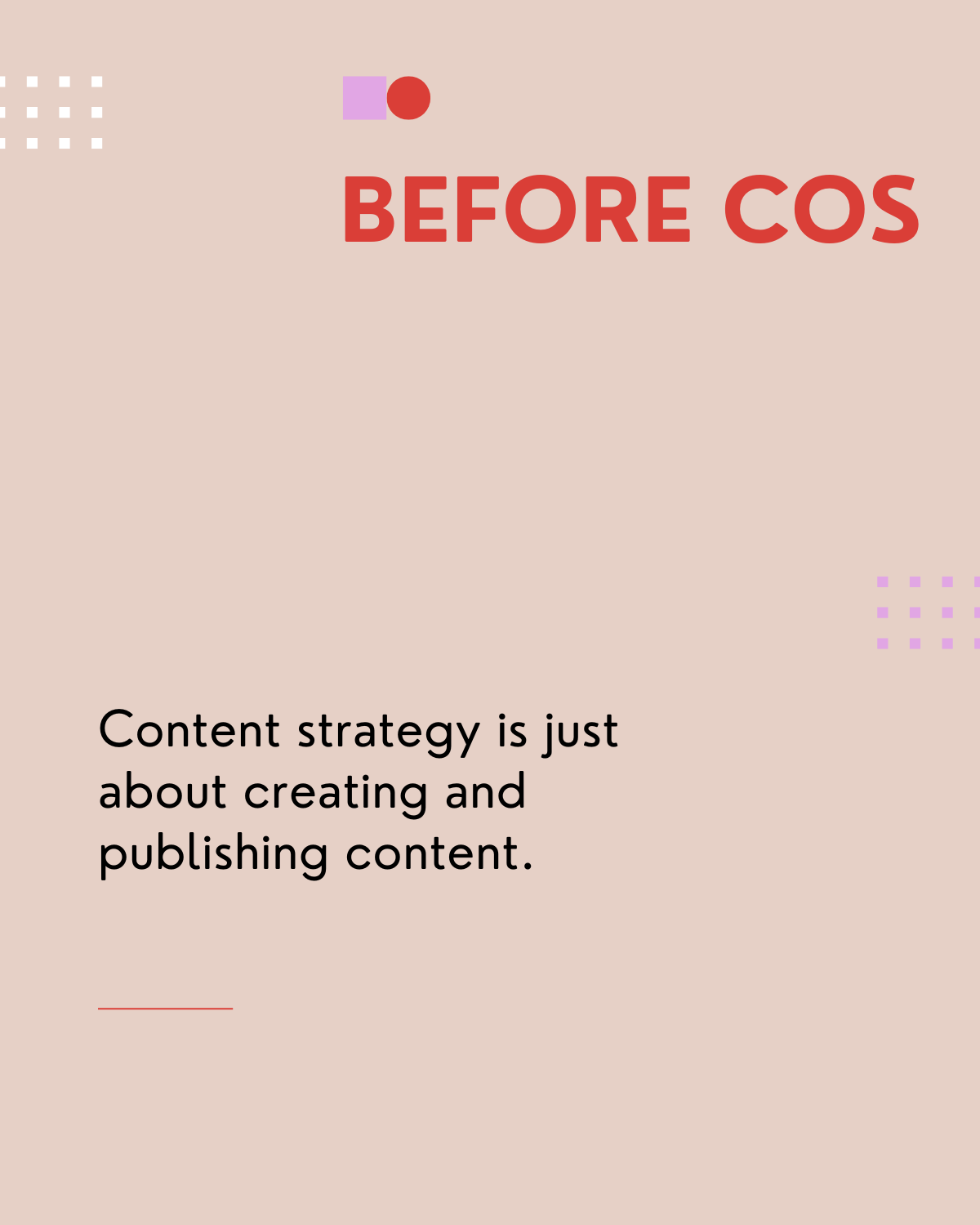
Before COS I believed Content Strategy is just about creating and publishing content.

After COS I realized that it is about structure, problem-solving and making content work for both users and the company
Key Lessons and Challenges
One of the most valuable skills I gained was content analysis. Paula’s content audit lecture completely changed how I look at content, teaching me how to break it down, find issues, and improve it. Carrie Hane and Deane Barker’s lessons on CMSs and their technical part also stuck with me. I used to think of CMSs as just platforms to publish content, but I now understand that the many restrictions they have are intentional - they exist to maintain order and prevent editors from turning a website into a chaotic mess.
One of the biggest challenges was accepting that content strategy isn’t about finding the “one right solution.” The right approach for one company may not work for another, and that kind of flexibility was hard for me as a perfectionist. I like having clear answers, and content strategy rarely provides them. Instead, it’s about making informed decisions with the resources available and balancing quality with practicality.
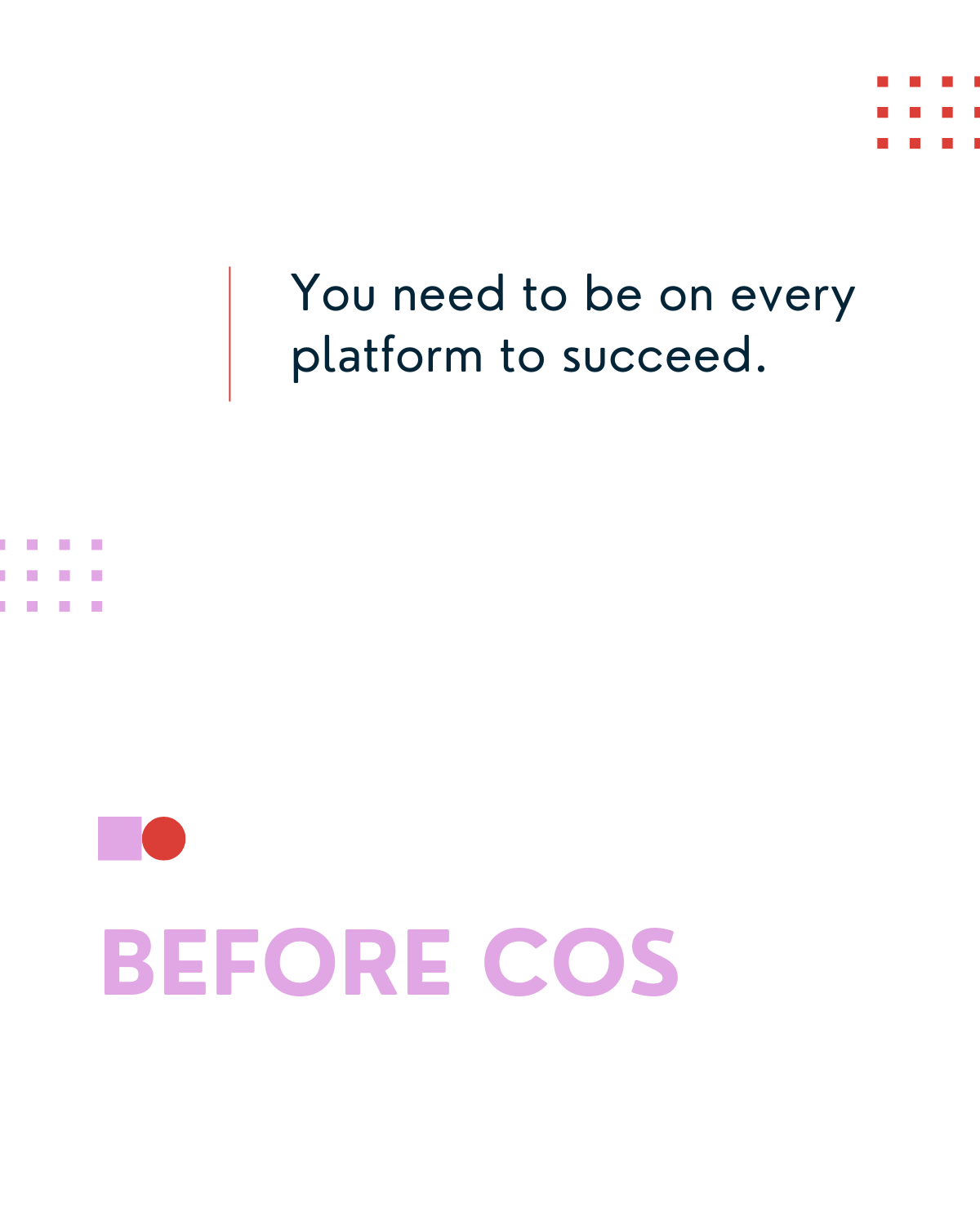
Before COS - You need to be on every platform to succeed.
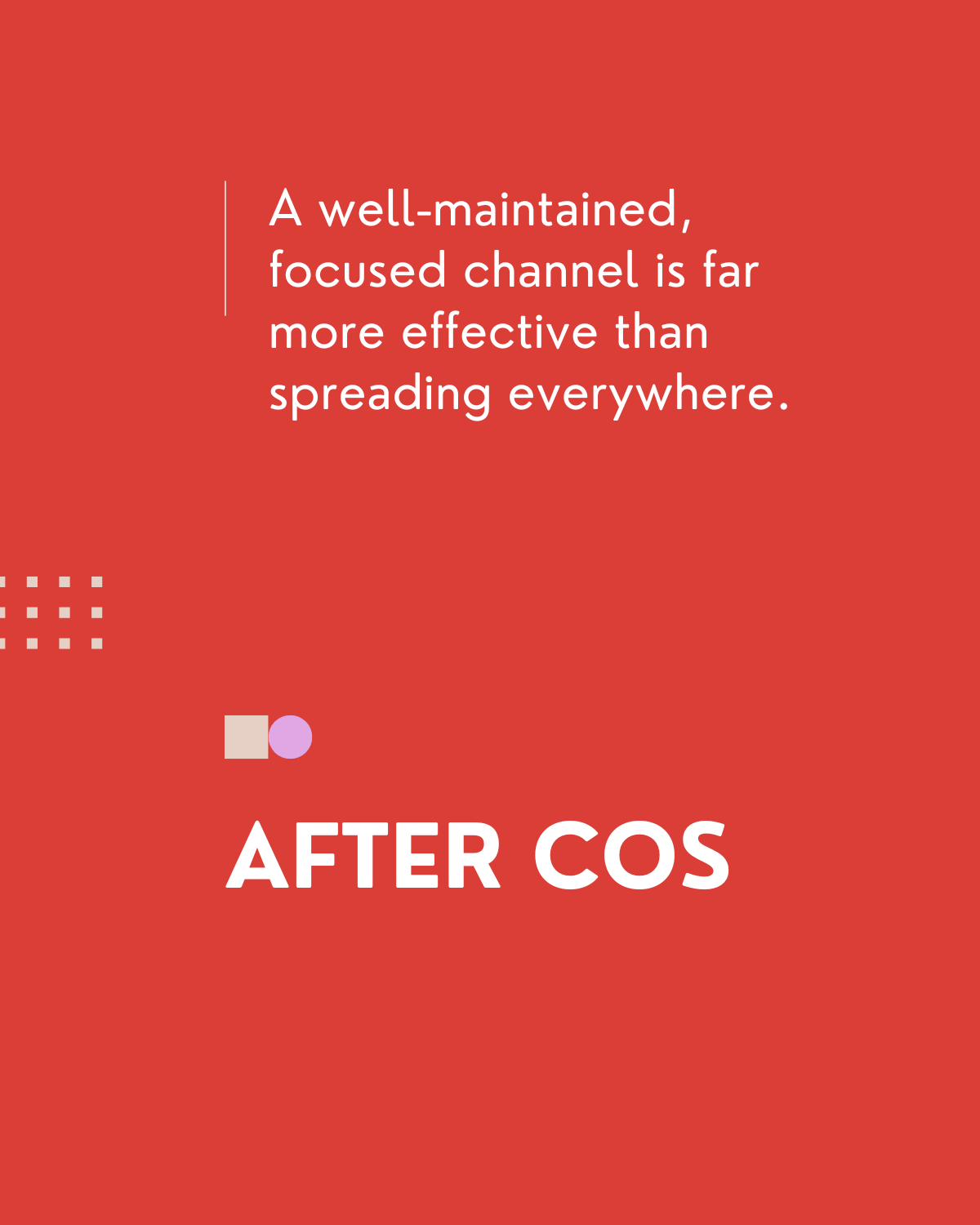
A well-maintained focused channel is far more effective than spreading everywhere.
Applying Content Strategy in the Real World
Speaking of practicality, applying content strategy principles in the real world isn’t always as straightforward as we learn in class. The program teaches us to aim for high-quality content, but in reality, deadlines and budgets often get in the way. Sometimes, you just have to publish something because it needs to be done, not because it’s perfect. This was frustrating at first, but it taught me an important lesson: content strategy isn’t just about ideal solutions - it’s about what works within given constraints.
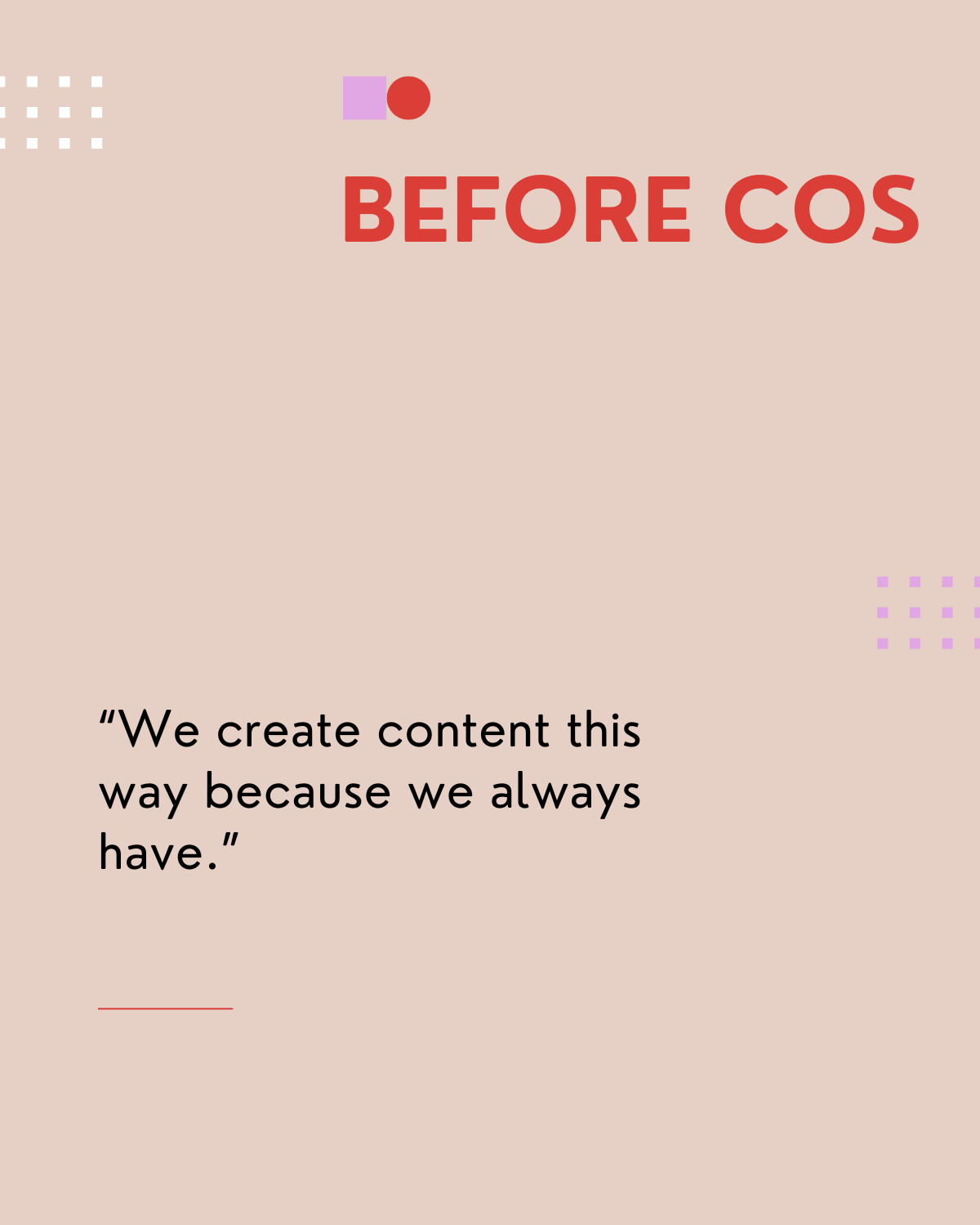
Before COS - I thought "We create content this way because we always have"
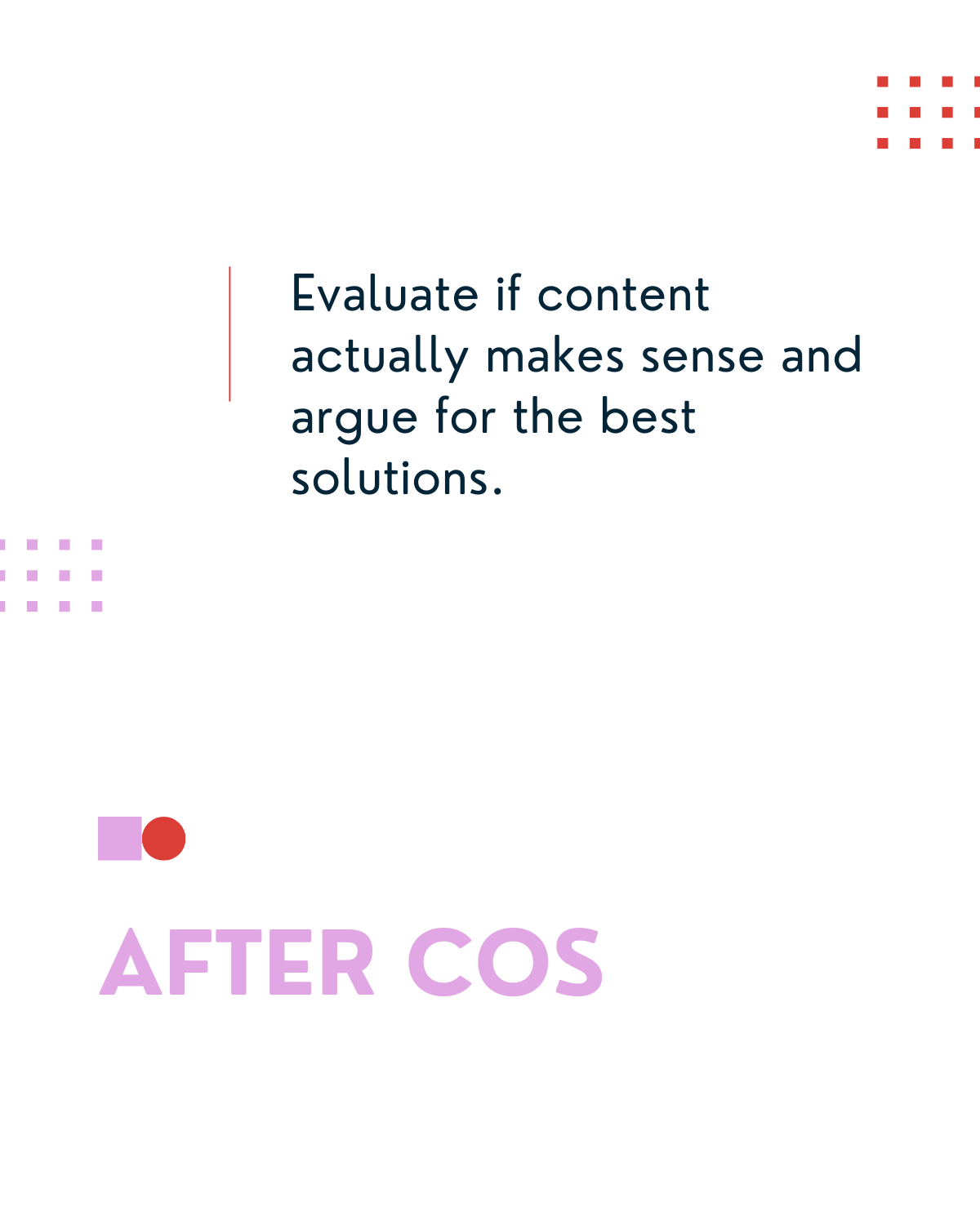
After COS - I evaluated if content actually makes sense and argue for the best solution.
My Perspective on Marketing and Content Strategy
Coming from Innovation Management, I had no formal marketing background before this program. I’ve since learned how to measure whether content is working, how CMSs function behind the scenes, and how content isn’t just about visibility - it’s about efficiency. My biggest takeaway? You don’t need to be everywhere. Before, I thought brands had to be active on every platform, but now I understand that consistency and focus on one well-maintained channel is often far more effective.
I don’t think I’ll ever be just a content strategist - just like I didn’t become only an innovation manager after my bachelor’s degree. But I know the skills I’ve developed will come in handy, even if it’s not obvious yet how. The ability to assess, structure, and optimize content is useful in so many areas, and I’m sure I’ll find ways to integrate it into my work.
Final Thoughts
Looking back, I’m really glad I took this step. I might not have planned for a career in content strategy, but the skills I’ve gained will stay with me. Content strategy isn’t just about content - it’s about people, processes, and making information work better. That’s something I can take with me, no matter what I do next.




